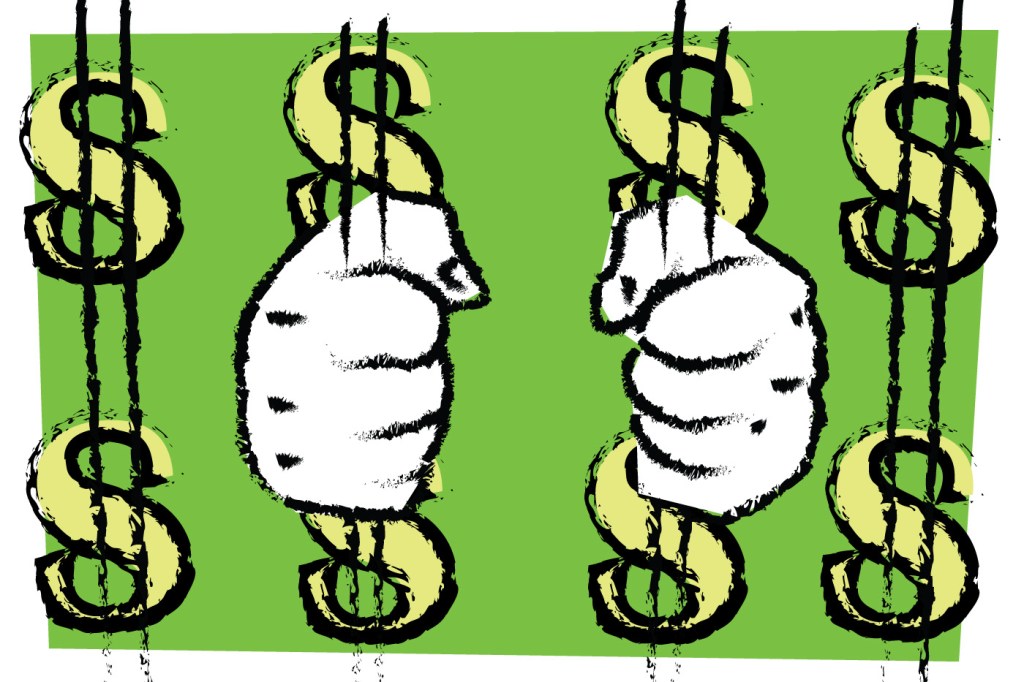3Qs: Why for-profit prisons are on the rise

Private prisons are a particularly hot topic these days, the setting of the Netflix dramedy Orange is the New Black and the subject of a recent 35,000-word Mother Jones exposé, in which a reporter went undercover as a corrections officer at a Louisiana for-profit prison to shed light on the facility’s harsh conditions.
 For-profit companies run more than 150 jails, prisons, and detention centers in the U.S., overseeing approximately 8 percent of the total prison population. And the industry’s two biggest players—Corrections Corporation of America and the GEO Group—rake in a combined total of $3.3 billion in annual revenue. Private corporations house approximately half of all immigrant detainees, according to a Huffington Post report, and many private prison contracts include a so-called “lockup quota.”
For-profit companies run more than 150 jails, prisons, and detention centers in the U.S., overseeing approximately 8 percent of the total prison population. And the industry’s two biggest players—Corrections Corporation of America and the GEO Group—rake in a combined total of $3.3 billion in annual revenue. Private corporations house approximately half of all immigrant detainees, according to a Huffington Post report, and many private prison contracts include a so-called “lockup quota.”
Here, mass incarceration expert Natasha Frost, associate professor in the College of Social Science and Humanities’ School of Criminology and Criminal Justice and its associate dean of graduate studies, explains how private prisons are changing the criminal justice system.
Between 1999 and 2010, the number of inmates serving sentences in private prisons grew by 80 percent. To what do you attribute the increase in the number of prisoners being held in these for-profit facilities?
Honestly, it’s more complicated than that one statistic suggests. Prison populations grew across the country over that decade, so the growth can be partly explained by more general trends in prison population growth. More importantly, any national statistic in this area masks the many different state stories around the use of private prisons. Over that same period, from 1999 to 2010, more states canceled private prison contracts than initiated them. Some states, including Massachusetts, never got into the business of contracting with private prison corporations, while others invested more heavily over time. One place we certainly saw exponential growth was in the use of private prisons and detention facilities within the federal system and some of this growth can be tied to immigration enforcement.
Vermont Sen. Bernie Sanders is among a small group of lawmakers who have worked hard but unsuccessfully to eliminate the nation’s private prison system, co-sponsoring the Justice is Not For Sale Act in the fall of 2015. “We need to start treating prisoners like human beings,” he said at the time. “Private companies should not be profiting from their incarceration.” What are some of the ways in which private prisons are cutting corners to boost their bottom line?
Sanders is certainly not alone in his distaste for profiting on incarceration. We have a problem with mass incarceration in this country—a problem that people on both sides of the political spectrum now recognize and are trying to alleviate. Mass incarceration is very expensive and regardless of who profits, the taxpayers pay. Across for-profit prisons, there are built-in incentives to send people to prison and to cut costs once they are there. Private prisons have definitely been accused of cutting costs to increase profit margins and this has been most notable in the areas of staffing and healthcare provision. Private prisons pay their employees less, offer fewer hours of training to new employees, and have higher rates of turnover than their publicly run counterparts. Perhaps not surprisingly, higher incidence of violence across these facilities is frequently tied to the problems in attracting and keeping well-trained, qualified correctional staff. All of these problems come across quite clearly in the Mother Jones piece.
The journalist who went undercover for the Mother Jones exposé noted that prison life changed him. “I feel ashamed of my lack of self-control, my growing thirst for punishment and vengeance,” he wrote. “I’m getting afraid of the expanding distance between the person I am at home and the one behind the wire.” As a researcher conducting a three-year study that aims to identify early indicators of stress in corrections officers, what do you believe are the biggest challenges facing the life of a CO both on and off the job?
So much research has focused on the effects of the prison environment on the inmates and comparatively little on the effects on those who have to work in these institutions. Despite a relative paucity of current research, we know that correctional work certainly takes its toll, with lasting effects on the behavioral, emotional, and physical well-being of officers. Here in Massachusetts for example, the suicide rate among corrections officers over the past six years has been five times higher than the national average and eight times higher than the suicide rate in Massachusetts more generally, where the suicide rate tends to be lower than the national average. These are truly devastating statistics and the tragic losses have taken their toll on the families, friends, and co-workers of the officers who have died by suicide.
Thankfully, correctional officer well-being has become a core concern in corrections and has become increasingly important to my own research on the consequences of mass incarceration. Carlos Monteiro, PhD’15, and I have had the privilege of working with correctional officers working in facilities across the Massachusetts Department of Correction as we begin to capture the myriad ways in which this occupation affects the lives of those who work in these institutions.





